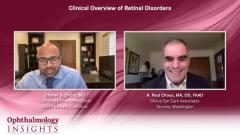
Retinal Eye Disorders: COVID-19 and Telemedicine
Experts in the field of retinal eye disorders discuss how the COVID-19 pandemic and use of telemedicine has affected communication between optometrists, ophthalmologists, patients, and providers.
Episodes in this series

A. Paul Chous, MA, OD, FAAO: Dilsher, how do you think the COVID-19 pandemic has affected retinal care and collaboration among different eye providers? Has it gotten more difficult during COVID-19? Are you seeing patients coming in with worse disease because they’ve been afraid of coming into any health care facility?
Dilsher S. Dhoot, MD:It’s been a really interesting time. It’s the first time in my career that we’ve seen anything like this. I’m sure yours too. What a fascinating time COVID-19 has been for all of us. When it first hit, we delayed all routine follow up appointments: our intermediate AMD [age-related macular degeneration], our 6-month appointments, and our annual diabetic checks, our epiretinal membrane checks, etc, were all delayed. We continued to give injections to patients who came in. We were still treating our patients with wet AMD. We’re still treating our patients with diabetes and retinal vein occlusion, for example, and certainly treating surgical patients like those that require retinal detachment repair. We delayed all elective surgeries.
A proportion of patients were lost to follow-up. The patients who were scared of COVID-19 came in 3 to 5 months past the due date for an injection and had progressed. Another proportion were very lucky. Even though they missed their appointments, they maintained vision, or they had minimal worsening and did OK. It was a variety of patients, but it was definitely an interesting time. As far as telemedicine, it’s difficult. I have colleagues in other spaces in medicine using telemedicine, but a lot of what we do requires the patient to be sitting in front of the imaging machine. If they require an injection, it requires us to physically provide that injection. It was difficult to do telemedicine. Certainly, checking routine patients can be done, but there would still need to be some form of imaging in that patient, OCT [optical coherence tomography], for example.
There were fewer telemedicine opportunities in the retina space than in other areas of medicine, but in general, our imaging changed a tad. We started to rely a lot more on wide-field photos. Before we would rely more on exams, maybe 30-degree photos, but wide-field images gave a nice exam when you have limited time to look at patients and you’re worried about catching COVID too. That would be the 1 thing that didn’t change in our practice. How about in your practice?
A. Paul Chous, MA, OD, FAAO: I totally agree. There’s more reliance on my part with imaging and less time at the slit lamp with a fundus lens because I didn’t want to contract COVID or unknowlingly transmit virus to more vulnerable patients. Especially in the first year, before we had vaccines, my whole goal was to get the patient in, refract them, dilate them, and image them. That was helpful to minimize the amount of time any one patient was in a small, closed space with me. I discovered in the last couple of years that imaging is a very useful surrogate in many ways. You can’t necessarily see the living retina as you’re scanning across it, looking for diabetic macular edema and the like, but it’s a pretty good substitute. In fact, in wide-field imaging coupled with an OCT on patients you’re concerned about, it’s about as good as many eye-care providers are in doing their clinical exam. I don’t think I missed anything that would have been picked up on a clinical exam with few exceptions. Things like glaucoma, where you need the stereopsis, right?
Dilsher S. Dhoot, MD: Yes. As far as the second part of the question, regarding communication, it was interesting. In the early COVID-19 outbreak times, a lot of optometrists were closed. There was no communication at that time because a lot of offices were closed. We stayed open later when offices started to open. We started to see communication go back to how it’s been. There were emergency patients who would get bypassed straight to us. That was fine, but it’s been an interesting time. Things have l eveled off back to a pre-COVID state in terms of communication. I don’t know if anything has changed about how we communicate. We continue to communicate in pre-COVID ways.
A. Paul Chous, MA, OD, FAAO: Agreed. We bounced back quite nicely. On average, optometrists had an office closure of between 6 and 8 weeks at the start of the pandemic. A lot of general ophthalmologists have told me they don’t want to do refractions anymore. I used to have a backup of 2 months, and now I’m backed up 6 months, which is good and bad. You get patients who are upset if they can’t get in for routine eye care. The problem for me is I’m wearing an N95 mask all day. I’ve got to be honest: I start at 8 in the morning. By the time I’m done at 5 PM, I feel as if somebody needs to carry me out to my vehicle, as if I’ve been hit by a truck. Pulmonology tells me, “Your lungs are fine.” But it’s exhausting to wear a high-quality mask for the duration of the day.
Dilsher S. Dhoot, MD: You’re right. The only pro is that I haven’t had a cold in many months. I feel like I may not give it up even when the mask mandates are gone. I may stick with my mask and my gloves. I like that, but you’re exactly right.
TRANSCRIPT EDITED FOR CLARITY
Newsletter
Don’t miss out—get Ophthalmology Times updates on the latest clinical advancements and expert interviews, straight to your inbox.


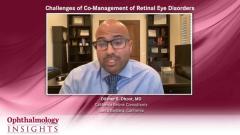
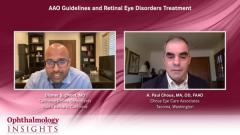
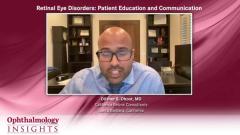
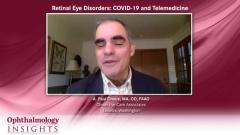

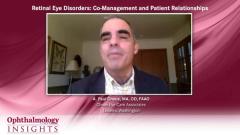
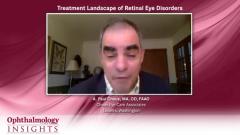
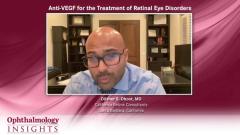
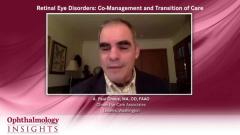
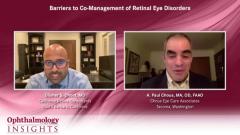
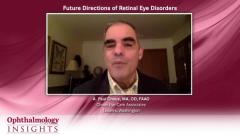



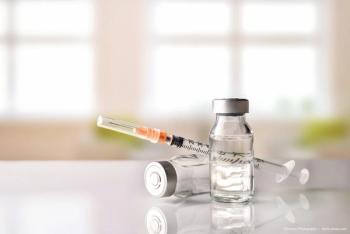














































.png)


